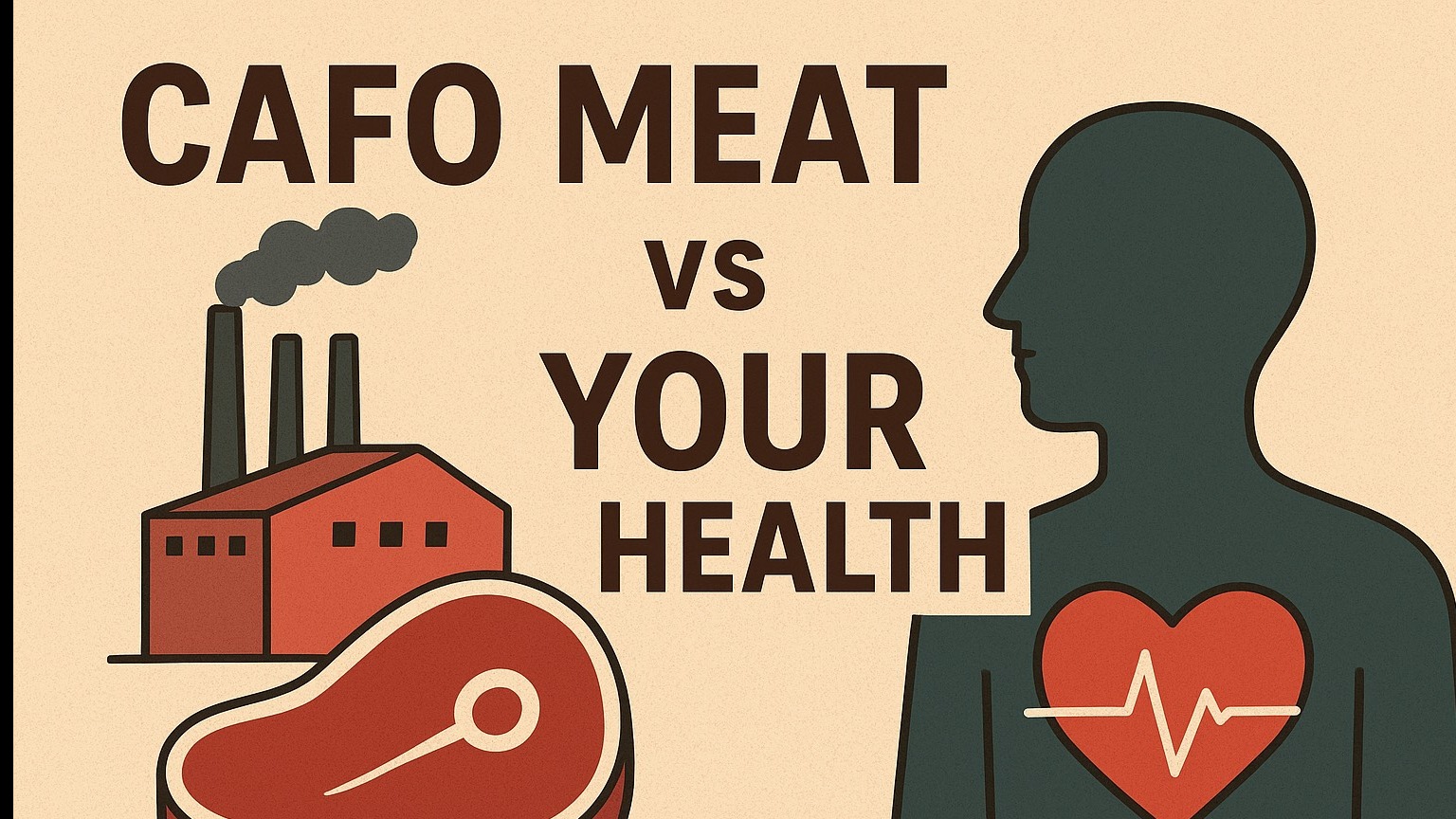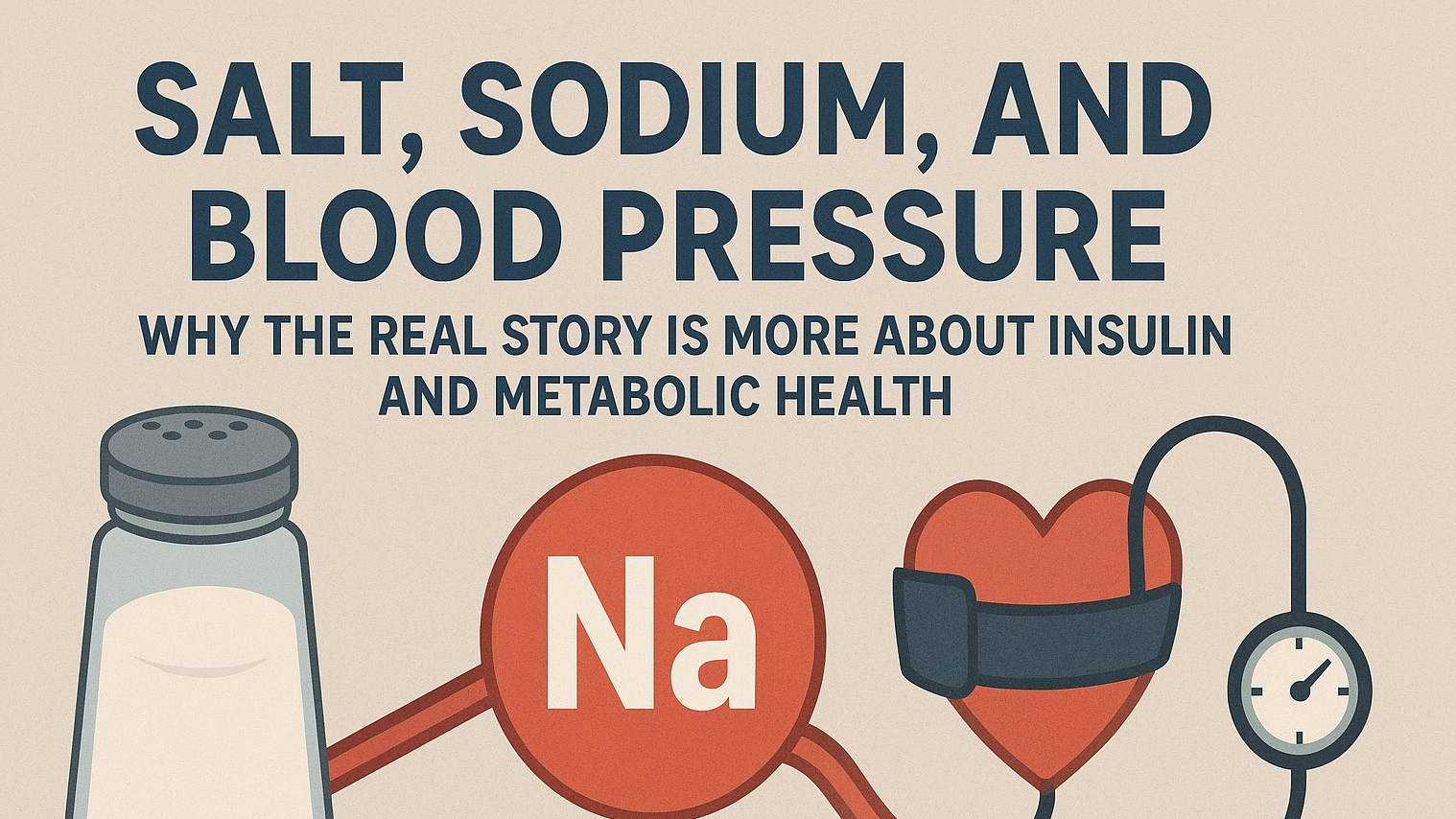
What I tell my clients (and why it matters for our kids) If you’ve ever stood in the grocery aisle wondering whether “conventional” meat is worth the bargain, this one’s for you. Let’s unpack CAFOs—concentrated animal feeding operations—and why regularly eating meat from these factory-style systems can work against your long-term health goals (and your kids’).
I’ll share what the research shows, how to shop smarter, and where you can grab recipes on my site that make the switch doable (and delicious). First, what exactly is a CAFO? The EPA defines “large CAFOs” by head count, not pasture: ≥1,000 beef cattle, 2,500 hogs over 55 lb, or 125,000 broiler chickens in confinement for 45+ days a year (thresholds vary for other species and manure systems). These are industrial facilities built for scale—crowding animals and managing waste in bulk. US EPA Crowding plus waste lagoons = more disease pressure.
Historically, that’s driven routine antibiotic use (now more regulated), and in U.S. beef cattle, growth-promoting hormone implants remain legal. Poultry and hogs are not allowed to receive hormones by law (important nuance). U.S. Food and Drug Administration+1Food Safety and Inspection ServiceVirginia Tech Publications Antibiotics: why consumer choice still matters Progress: Since 2017 and again in 2023, the FDA ended growth-promotion uses of medically important antibiotics and moved many remaining products to veterinary prescription only. Sales of medically important antibiotics for food animals are down ~37% from their 2015 peak. We still have a long way to go. U.S. Food and Drug Administration+3U.S. Food and Drug Administration+3U.S. Food and Drug Administration+3 Reality check: Antibiotics are still used for treatment, control, and prevention in crowded systems, and resistant bacteria continue to show up along the farm-to-food chain.
The U.S. NARMS program tracks resistance in food animals, retail meats, and people—a “One Health” lens that keeps flagging concerns. Studies find resistant E. coli, Salmonella, and sometimes MRSA on retail meats (varies by product and region). And it’s not getting better with the continued use of antibiotics, and this transfers to your children and you.. U.S. Food and Drug AdministrationCDCPMC+1 Why it matters to you: Handling or undercooking contaminated meat can transmit resistant bugs. That makes routine infections harder to treat—exactly what we’re trying to avoid while building metabolically healthy, resilient bodies. CDC Hormones: separating facts from fear In the U.S., growth-promoting hormones are approved for beef cattle and sheep (not for poultry or swine).
Residues in food are regulated; agencies argue typical exposures are low. Still, endocrine biology is dose- and timing-sensitive, and many parents choose to minimize avoidable hormone exposures where practical—especially for kids. U.S. Food and Drug AdministrationFood Safety and Inspection Service Independent of hormones in beef, a large and growing literature links earlier puberty in girls to modern exposures and lifestyle. U.S. and global data show the age at menarche has declined over recent decades; breast development (thelarche) is also occurring earlier. Multiple drivers are implicated: nutrition, adiposity, stress, and endocrine-disrupting chemicals (EDCs) from plastics/packaging, hormones in milk, ice cream, cheese and beef, and the broader environment. (Note: studies don’t pin this trend squarely on meat hormones; it’s multifactorial.) PubMedPMC+2PMC+2 From a functional-medicine standpoint, we lower total hormone-like and EDC exposure when we can.
Choosing organic/grass-fed meats (no added hormones, no antibiotics) is one lever among many (alongside reducing plastic contact, ultra-processed foods, and improving fiber and micronutrient density). Agricultural Marketing Service “But is CAFO meat actually linked to disease?” Most large human studies look at red/processed meat intake (not CAFO status). The picture: Processed meat (hot dogs, bacon, deli meats) = classified carcinogenic (Group 1) with a dose-response for colorectal cancer. Whole Animal Red meat is not carcinogenic, but processed red meat is carcinogenic (Group 2A). Translation: the more often you eat processed meat, the higher the relative risk. IARC+1 Higher long-term intake of processed meat is associated with higher risk of total mortality, cardiovascular disease, type 2 diabetes, and colorectal cancer in prospective cohorts and meta-analyses (strength varies by outcome; poultry/fish don’t show the same pattern).
Mechanisms include heme iron, nitrites, smoke/cure byproducts, and gut-microbiome effects. BMJPubMedJAMA Network Does CAFO vs. pasture-raised change those associations? We don’t have large head-to-head trials in humans. But CAFO systems increase the probability of encountering antibiotic-resistant bacteria on meat and expose communities to concentrated waste streams—two separate public-health concerns beyond the meat-itself discussion. From a risk-management lens, many families choose meats from systems that reduce these exposures. CDC
What I recommend to clients (and what I buy) Favor “USDA Organic” for meat and poultry when possible. Organic prohibits antibiotics and hormones, requires organic feed, and sets stronger animal-care standards (e.g., pasture for ruminants). If budget is tight, rotate organic for the meats your family eats most, and try to minimize processed meats like hot dogs, salami, and deli meat.. Agricultural Marketing Service+1 Look for “No antibiotics ever” (or “Raised without antibiotics”) and third-party welfare certifications when organic isn’t feasible. These claims are audited under USDA systems; they’re not perfect, but they’re better than nothing. Food Safety and Inspection Service
For beef (non-dairy cows): choose 100% grass-fed/grass-finished or organic to avoid growth-promoting hormones and to improve fatty-acid profile. (Reminder: poultry/pork don’t legally get hormones, so focus your label reading there on antibiotics and welfare.) U.S. Food and Drug AdministrationFood Safety and Inspection Service Keep processed meats as rare treats.
The IARC classification is about pattern and dose. Swapping in fresh, minimally processed proteins pays off. IARC Kitchen hygiene still matters: separate cutting boards, wash hands, cook to temp. That’s your last line of defense against any bacteria—resistant or not. (CDC/NARMS continually track these trends.)
CDC For parents: supporting healthy puberty timing Early puberty is a complex, multifactorial trend. What helps: Whole-food diet with plenty of plants and fiber, less ultra-processed foods and sugary beverages. Maintain a healthy BMI and active lifestyle. PMC Minimize avoidable EDCs: limit plastic food contact (use glass/stainless), avoid heating food in plastic, and choose fresh over highly packaged when possible. PMC+1 Choose organic/antibiotic-free meats where you can—as part of lowering total hormonal/EDC burden. Agricultural Marketing Service My healthy-swap playbook (with links from my site) When you upgrade your proteins, you don’t need complicated recipes. Try these reader favorites: Steak Bites & Mashed Sweet Potatoes (use grass-fed beef): fast, family-friendly, macro-balanced.
Larson Health Weight Loss Services Hummus & Veggie Turkey Wrap (great for lunchboxes; go for organic turkey when possible). Larson Health Weight Loss Services Super Simple Salmon Cakes (wild salmon; pantry-friendly).
Larson Health Weight Loss Services Want a foundation to build on? The General Healing Diet lays out the anti-inflammatory, whole-food framework I teach to my clients.
Larson Health Weight Loss Services And if you like learning in audio/video form, catch The Larson Health Podcast on YouTube @TheCoachKimLarson for deeper dives and practical weekly coaching.
Larson Health Weight Loss Services Bottom line (my coach’s take) Eating less processed meat, smarter red meat, and more seafood/plant proteins moves the needle on long-term disease risk. Rice and beans is a complete protein if you are on a budget and want the complete amino acid profile of animal protein. PubMed Choosing organic/antibiotic-free (and grass-fed for beef) reduces exposure to growth hormones (in beef) and lowers your contribution to antibiotic resistance—without sacrificing flavor or budget if you plan a bit.
U.S. Food and Drug AdministrationAgricultural Marketing Service For our kids, pair better protein with fiber-rich vegetables and fruit, minimally processed meals and lower EDC exposure.
That’s a comprehensive strategy—not alarmism, just smart, doable prevention. PMC+1 If you want a tailored weekly meal plan that uses pasture-raised or organic proteins and fits your family’s budget, just ask and I can help
 Add Row
Add Row  Add
Add 










Write A Comment